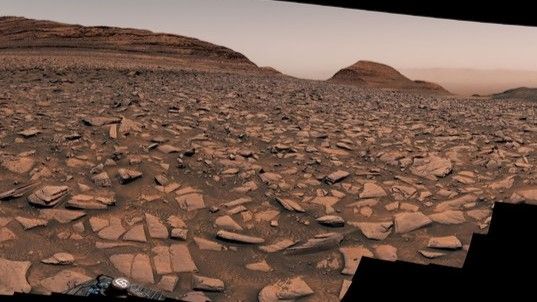For twelve years, Curiosity has been exploring the rocky surface of Mars, uncovering the mysteries of the Red Planet and sending back pictures and data to Earth.
The Mars rover, created by NASA’s Jet Propulsion Laboratory (JPL), has been slowly climbing Mount Sharp since 2014. This mountain, also known as “Aeolis Mons,” is home to the boulder-filled Gediz Vallis channel, which some scientists believe may have been an ancient riverbed.
Earlier this year, Curiosity entered the Gediz Vallis channel, and recently JPL released a 360-degree panorama view of the area for Mars enthusiasts to enjoy.
The view allows viewers to explore the Martian landscape surrounding Gediz Vallis, including Kukenán Butte, Pinnacle Ridge, Texoli Butte, and a distant view of Gale Crater Rim.
Scientists are still debating how the Gediz Vallis channel was formed. It could have been carved by water long ago, shaped by strong winds, or created by landslides from Mount Sharp. The boulders and debris found by Curiosity along the way may hold clues to its formation.
Curiosity has come across mysterious white sulfur stones in the area. These stones contain yellow crystals of sulfur when broken open, a puzzling find as sources of sulfur like hot springs and volcanoes have not been discovered on Mars.
“We’re faced with an interesting puzzle as we examine the sulfur field from every angle to understand its formation,” said Ashwin Vasavada, the project scientist for Curiosity, in a statement. “There’s a lot of data to analyze, and we’re excited to solve this mystery.”





